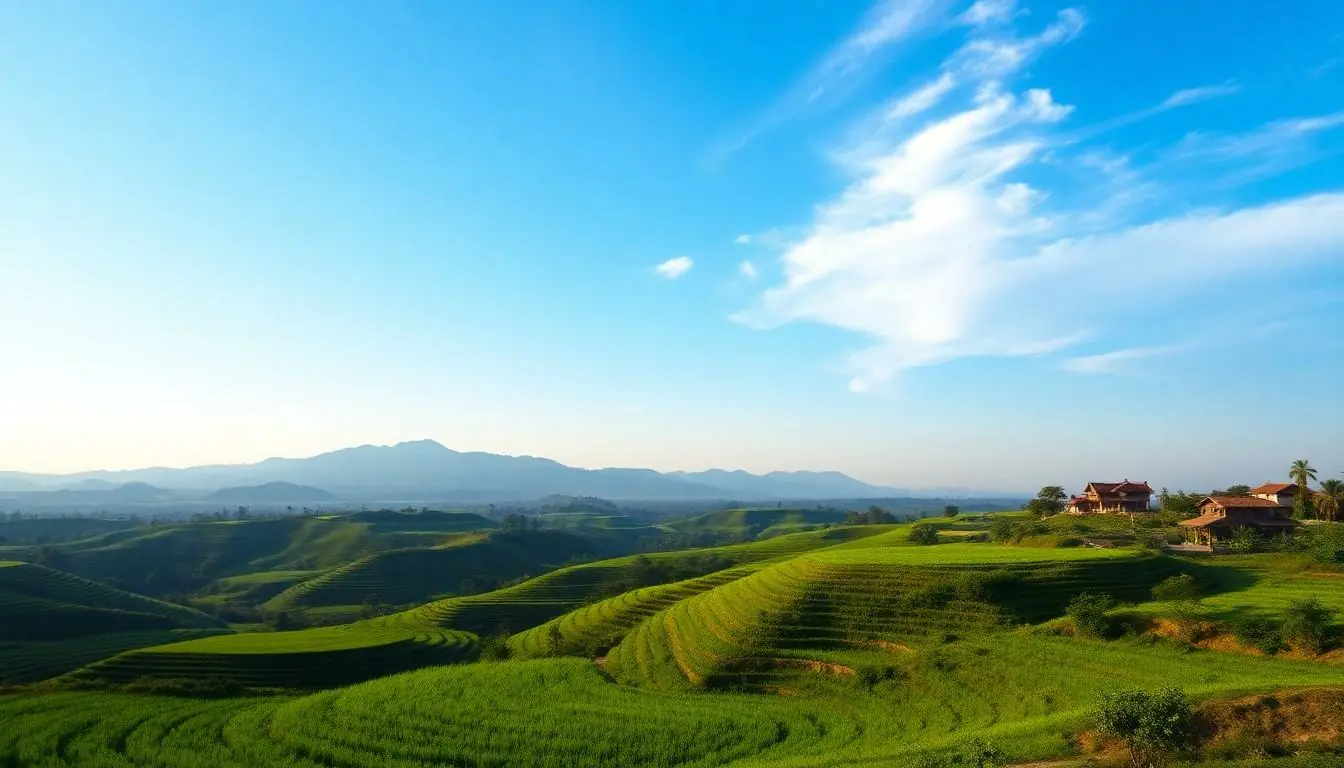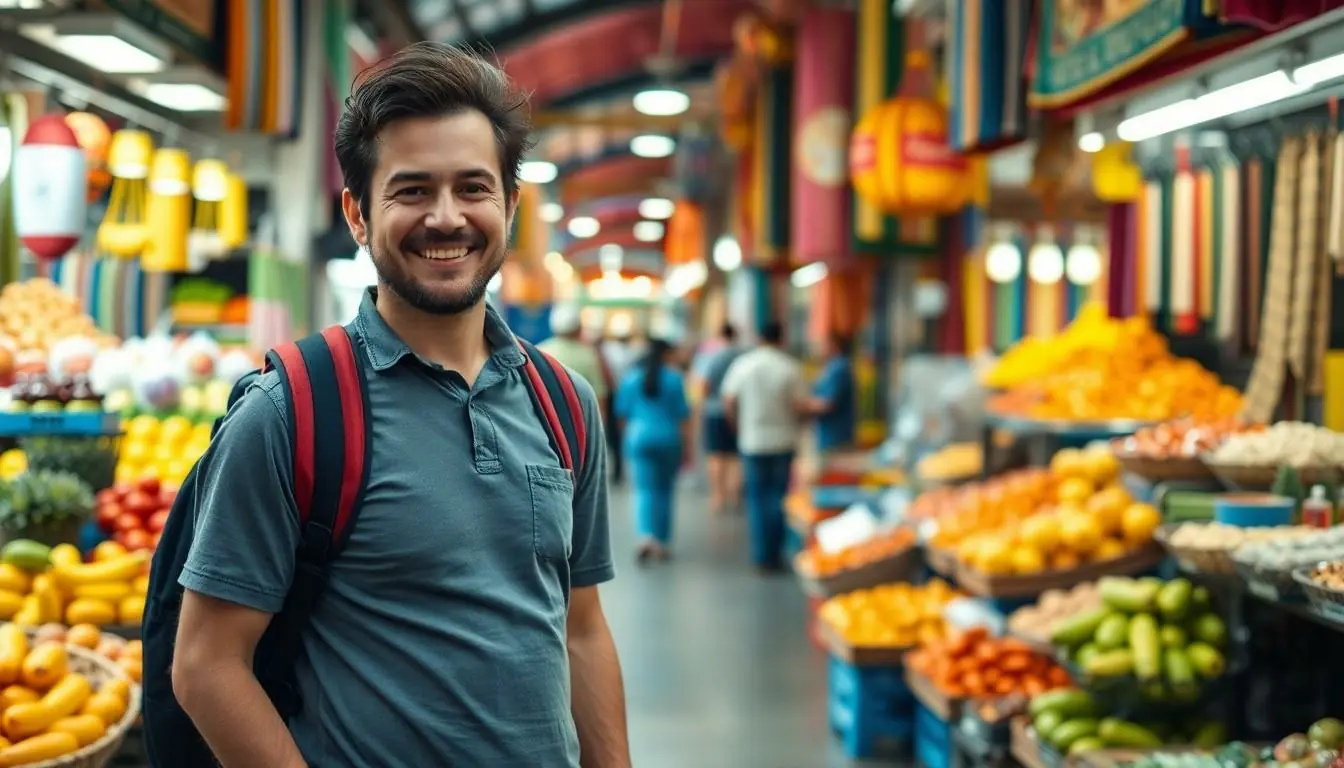Table of Contents
ToggleVietnam is a treasure trove of stunning landscapes, rich history, and mouthwatering cuisine just waiting to be explored. But before you pack your bags and hop on that flight, you might want to arm yourself with a few essential travel tips. After all, navigating bustling markets and crossing chaotic streets can be a bit like playing a real-life game of Frogger—exciting but slightly dangerous!
Essential Vietnam Travel Tips
Navigating Vietnam requires an understanding of its bustling environment. Start by familiarizing oneself with local customs and etiquette. Greeting a Vietnamese person typically involves a nod or a smile rather than a handshake, especially if they are older.
Bargaining enhances the shopping experience in markets. Sellers expect negotiations, so approaching prices with a friendly demeanor often yields better deals. Recognize that some markets may appear chaotic; patience helps alleviate any stress.
Using local transportation can save time and money. Taxis and ride-hailing apps like Grab are convenient. Public buses also offer a budget-friendly alternative, allowing travelers to immerse in everyday life.
Staying hydrated is crucial, especially in warmer months. Carry bottled water to maintain energy levels while exploring. Street food is a highlight; however, choose vendors with a high turnover of customers to ensure freshness and safety.
Being aware of cultural practices enhances engagement with locals. Respect for religion and customs can lead to deeper interactions. Dress modestly when visiting temples or religious sites, as this shows consideration for local traditions.
Lastly, learning basic Vietnamese phrases can enhance communication. Simple greetings like “Xin chào” for hello or “Cảm ơn” for thank you show effort and can lead to friendlier interactions. Establishing connections with locals makes the travel experience in Vietnam memorable.
Planning Your Trip

Planning a successful trip to Vietnam involves understanding the best times to visit and the necessary visa requirements. These aspects significantly enhance the travel experience.
Best Time to Visit
Visiting Vietnam is ideal from December to April. During these months, the weather is mostly dry and comfortable across the country. Avoiding the rainy season, which spans May to October, prevents weather-related disruptions. Peak tourist season occurs during Lunar New Year, leading to higher prices and crowded attractions. Travelers should consider regional climates; Northern Vietnam experiences cooler temperatures, while Southern Vietnam remains warm year-round. Weighing these factors helps determine an optimal travel period.
Visa Requirements
Visa requirements vary depending on nationality. Many nationalities can enter Vietnam visa-free for stays of up to 15 days. Longer visits may require obtaining a visa through an embassy or online e-visa application. Travelers planning to stay for more than 30 days should secure a visa in advance. It’s crucial to check current regulations, as they change frequently. Applying for a visa online is generally simple, saving time and effort for travelers. Understanding these prerequisites ensures smooth entry into Vietnam.
Getting Around Vietnam
Traveling around Vietnam requires understanding various transportation options and local practices. Knowing how to navigate efficiently enhances the overall experience.
Transportation Options
Taxis offer a quick way to get around cities. Ride-hailing apps like Grab provide convenience and transparent pricing. Buses serve as a cost-effective means for longer journeys, connecting major cities and regions. Motorbike rentals are popular, allowing travelers to explore scenic routes at their own pace. Trains provide a pleasant alternative for longer distances with beautiful landscapes along the way. Biking can also be an excellent choice for short distances, especially in rural areas.
Tips for Local Transportation
Prioritize safety when choosing transportation. Always opt for licensed taxis or reputable ride-hailing services. Negotiate fares with drivers before starting trips in non-metered taxis. Learning basic Vietnamese phrases proves beneficial for better communication with locals. Consider downloading local maps and translation apps to assist with navigation. Carry small denominations of the local currency, as drivers often require exact change. Timing your travel early in the day helps avoid congestion in larger cities.
Must-Visit Destinations
Vietnam boasts unique destinations that capture its vibrant culture and stunning landscapes.
Exploring Hanoi
Travelers find charm in Hanoi with its rich history and bustling streets. The Old Quarter’s narrow alleys brim with tradition and street food delights. Sightseeing at Hoan Kiem Lake offers a peaceful escape amidst the city’s hustle. Visitors also appreciate the architectural beauty of the Ho Chi Minh Mausoleum and the Temple of Literature. For art lovers, the Vietnam Fine Arts Museum features captivating exhibitions. Engaging with locals over a cup of egg coffee enhances the experience, making Hanoi a must-visit.
Discovering Ho Chi Minh City
Ho Chi Minh City, formerly known as Saigon, presents a blend of modernity and tradition. Iconic sites such as the Notre-Dame Cathedral Basilica and the War Remnants Museum draw significant attention. Street vendors line the roads, offering a taste of local cuisine, from pho to banh mi. Mekong Delta tours provide insight into rural life and scenic views. Vibrant markets, like Ben Thanh Market, offer shopping opportunities for souvenirs and crafts. Nightlife is lively, with rooftop bars showcasing stunning cityscapes.
Beautiful Landscapes in Vietnam
Vietnam’s natural beauty is captivating, with diverse landscapes that amaze every traveler. Ha Long Bay’s emerald waters and limestone islands create breathtaking scenery. Adventure seekers enjoy trekking in Sapa, where terraced rice fields stretch across hills. The Golden Bridge in Da Nang features a dramatic design that attracts many visitors. Also noteworthy is the Phong Nha-Kẻ Bàng National Park, renowned for its extensive cave systems. Nature enthusiasts find paradise in the tranquil beaches of Phu Quoc Island, perfect for relaxation.
Cultural Etiquette
Cultural etiquette in Vietnam significantly enhances the travel experience. Understanding local customs plays a crucial role in making meaningful connections with the people.
Local Customs and Traditions
Respect for elders holds great importance in Vietnamese culture. Greetings typically involve a nod or a smile, rather than a handshake. It’s common to address someone by their title, followed by their first name. Celebrations like Tet, the Lunar New Year, showcase family togetherness and honor ancestral traditions. Observing proper behavior in religious sites is essential; visitors must dress modestly and remain quiet. Engaging with locals in friendly banter creates a welcoming atmosphere. Acknowledging these customs not only shows respect but also reflects an appreciation for Vietnam’s rich heritage.
Dining Etiquette
Dining in Vietnam offers a unique cultural experience. It’s polite to wait for the eldest person to begin the meal before others start eating. Using chopsticks correctly is important; resting them on the table between bites is frowned upon. Sharing dishes is common, emphasizing the communal aspect of dining. Accepting food with both hands signifies gratitude, while finishing one’s plate shows appreciation for the meal. Traditionally, offering food or toast with a lighthearted “Một, Hai, Ba, Dô!” brings joy to the dining experience. Practicing these dining manners fosters respect and connection with locals during meals.
Safety and Health Tips
Ensuring safety and maintaining health are crucial during any trip to Vietnam. Travelers can enjoy their experience while staying vigilant about their surroundings.
Staying Safe While Traveling
Opt for licensed taxis or reputable ride-hailing services like Grab for transportation. Approach busy streets with caution, as traffic can be chaotic. Keep personal belongings secure and avoid displaying valuables in crowded areas. Learn a few basic Vietnamese phrases to enhance communication with locals. Discerning trustworthy establishments for food and accommodations ensures a safer experience. Lastly, engage in group activities when exploring unfamiliar areas, as companions can enhance safety and enjoyment.
Health Precautions
Staying hydrated is essential, especially in Vietnam’s tropical climate. Carry bottled water to avoid health issues from tap water. Choose street food vendors with plenty of customers to ensure freshness and quality. Vaccinations are recommended for hepatitis A and typhoid prior to travel. Consider travel insurance to cover health emergencies, including medical evacuation if necessary. Allergies, particularly to certain foods, require clear communication with vendors. Lastly, pack a basic first aid kit to address minor ailments promptly.
Vietnam offers an unforgettable adventure filled with rich culture and stunning landscapes. By embracing local customs and preparing adequately, travelers can navigate the vibrant streets and markets with ease. Understanding transportation options and prioritizing safety will enhance the overall experience.
With a little effort to learn basic Vietnamese phrases and respect local traditions, connections with locals can flourish. Whether exploring bustling cities or serene beaches, each moment in Vietnam contributes to a memorable journey. Travelers who keep these tips in mind will surely leave with cherished memories and a desire to return.




